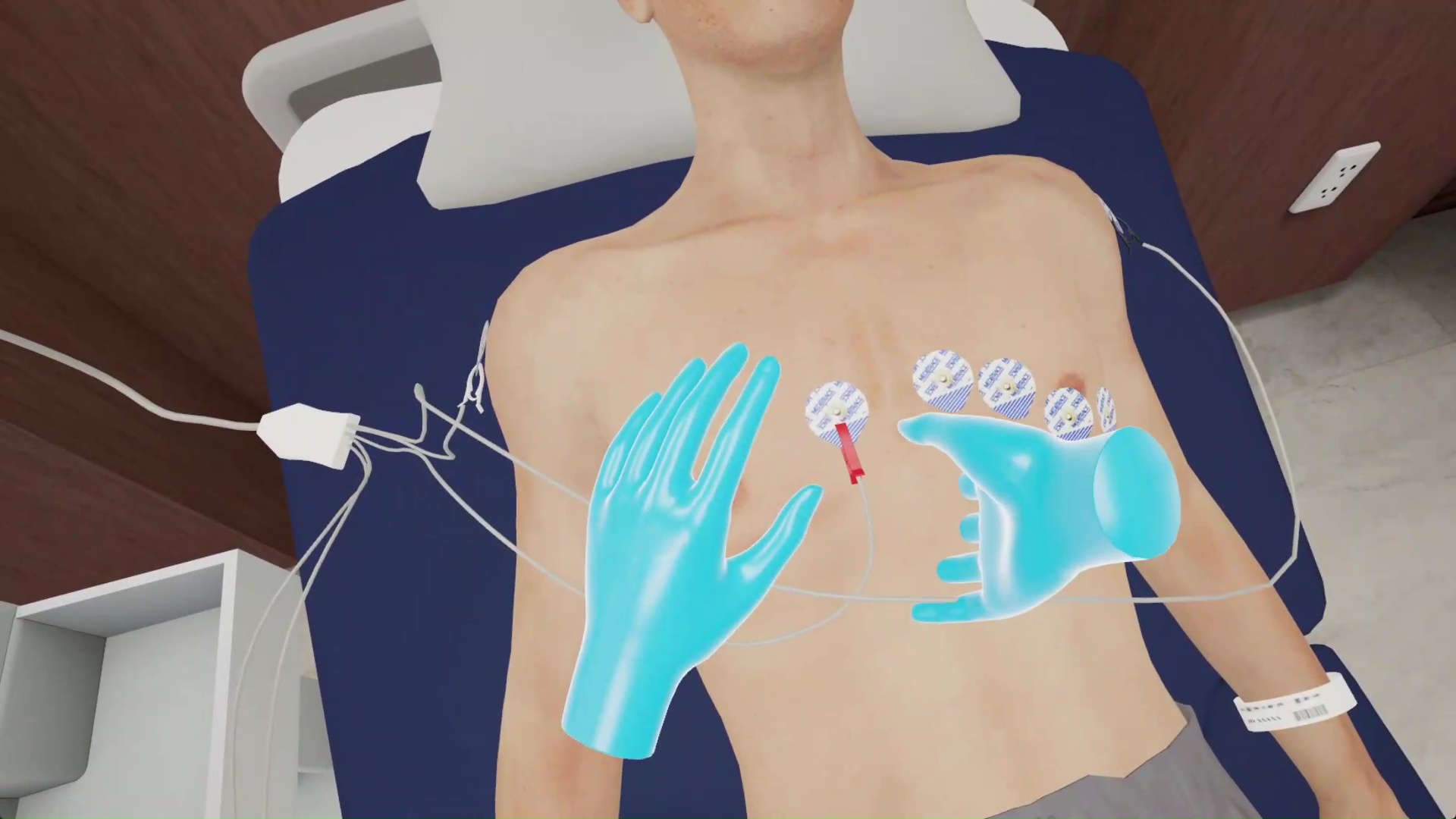EKG
Thirty-eight-year-old Paul Anderson requires an EKG examination. To ensure a correct reading, leads and electrodes will have to be placed in precise locations. Though a fairly common and simple procedure, it requires practice to perform it with accuracy.
This VR simulation for EKG examination is designed to help healthcare practitioners practice the procedure in a safe and controlled virtual environment. With both training and assessment modes, learners can perform the procedure and assess themselves on their performance.
- Applying pre-gelled tabs in the correct locations on patient’s chest
- Correctly attaching electron leads to the correct sites
- Evaluating EKG readings for abnormal rhythms and for any interferences
- Developing understanding of how to use the controls on the machine to obtain an EKG report
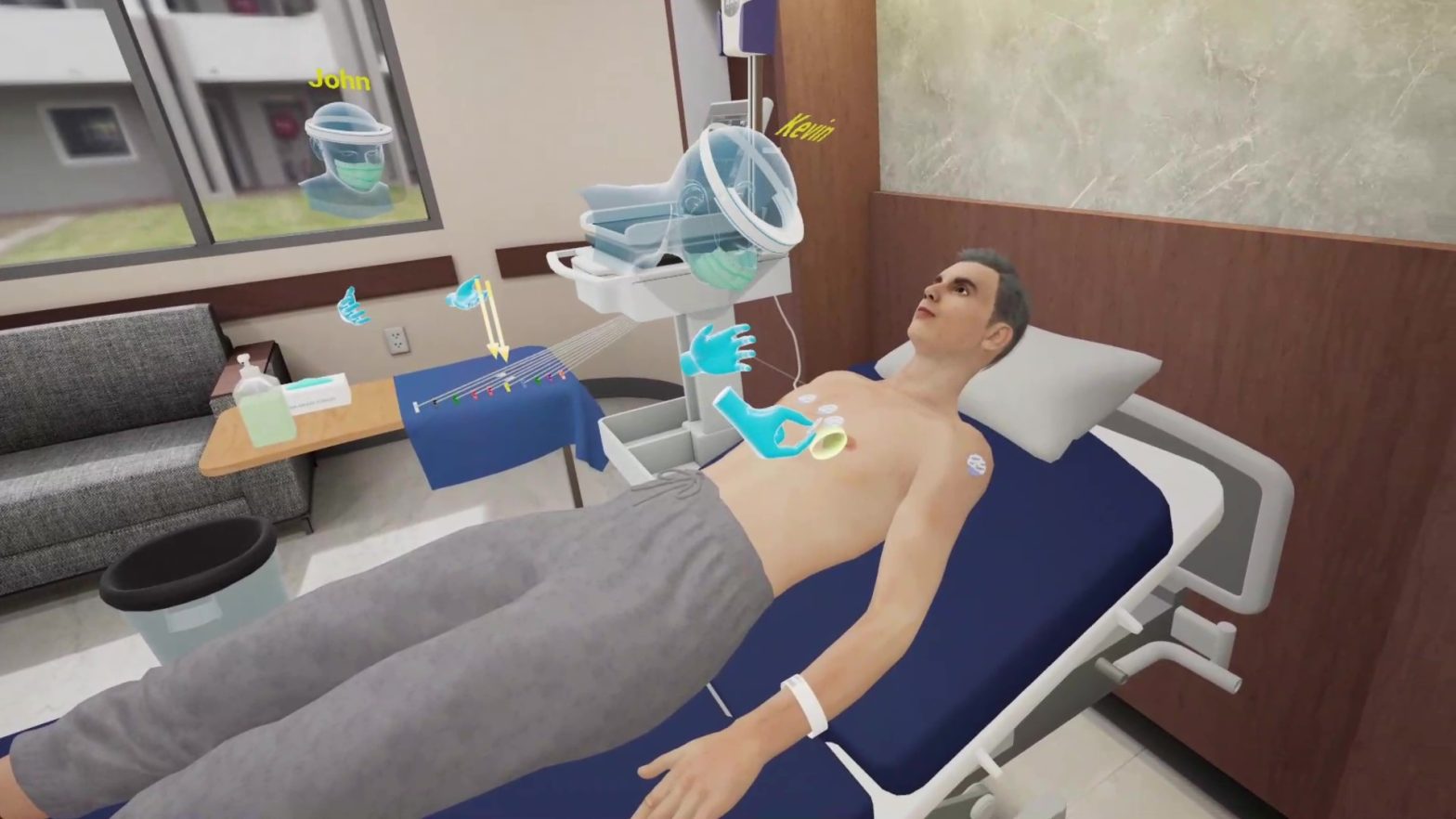
- Developed in alignment with Electrocardiography for Healthcare Professionals (Fifth Edition) by Kathryn Booth and Thomas E. O’Brien.
Customize Your Program
Get rid of the editor. Adopt in-VR customization.
MedVR Education is bringing to you in-VR customization that will enable you to customize your procedural simulations by making selections from a range of feature choices.
- Select patient from a diverse background
- Choose preferred virtual environment
- Select equipment used in the procedure
- Modify difficulty level of the assessment mode
- …..many more to come
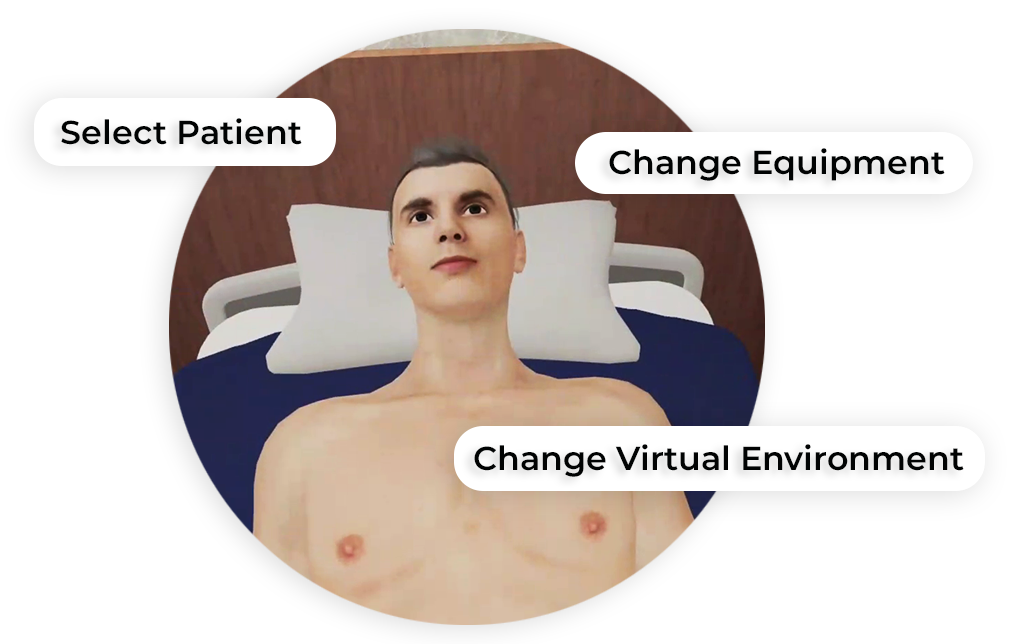
 Multi-playerSessions
Multi-playerSessions Physics-based Interactions
Physics-based Interactions
Core Skills Training
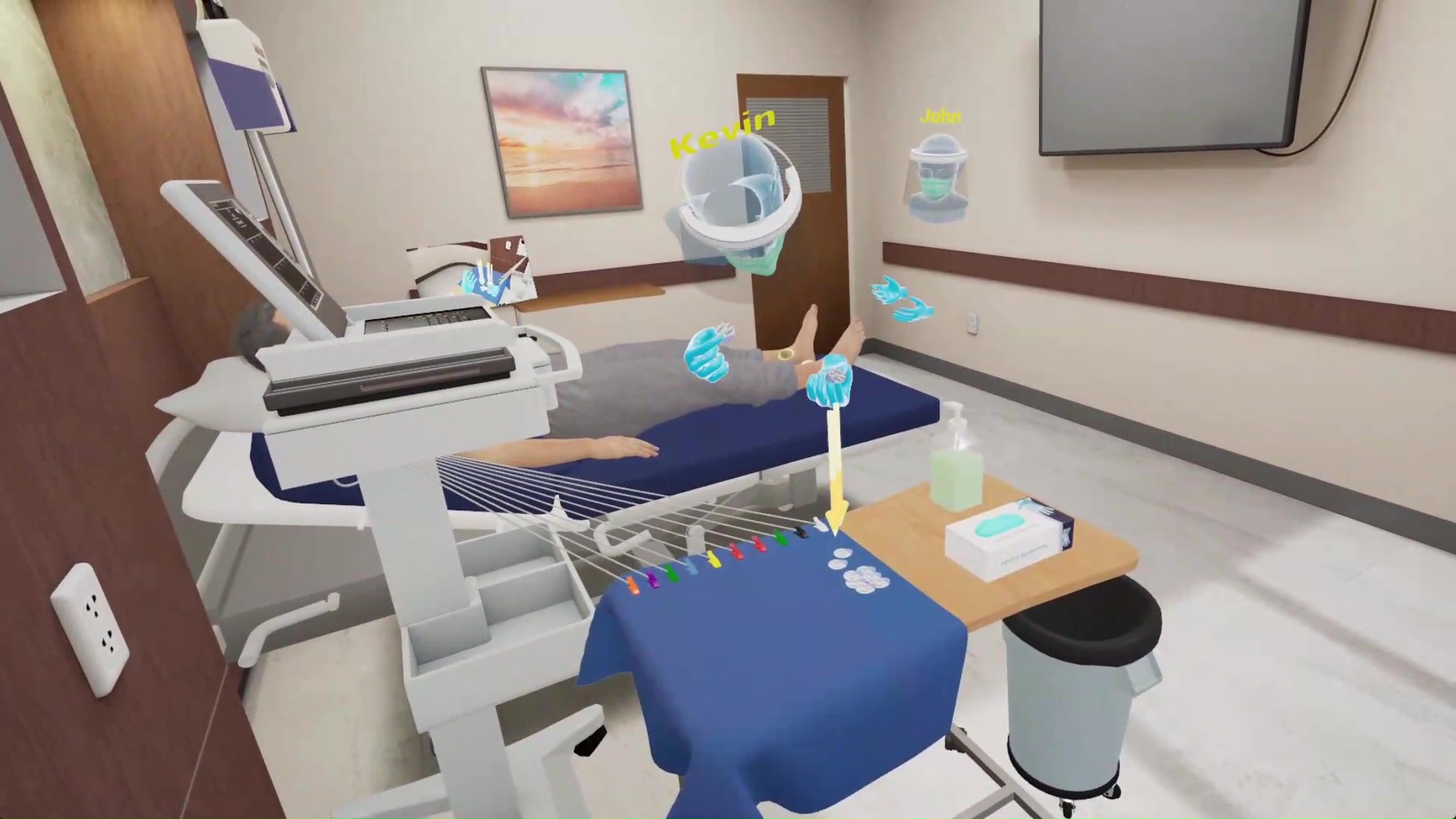
Performing an EKG Examination
In this module on performing an EKG examination, the learner will begin by confirming the identity of the patient. Following this the learner will place the limb and precordial leads on the correct locations and attach the wires to them. After ensuring that the EKG waveform is clear without artifact the learner will take a print of the EKG. Finally, the learner will remove the EKG stickers, dispose them of in the bin and sanitize their hands.
All necessary affordances are provided to complete the procedure with efficiency.
Training
With prompts, guidance and affordances learners are hand-held through the process to practice the procedure in a virtual environment with a virtual patient.
- Photorealistic virtual environment
- Physics-based interactions
- Detailed instructions
- Adequate affordances to assist in task completion
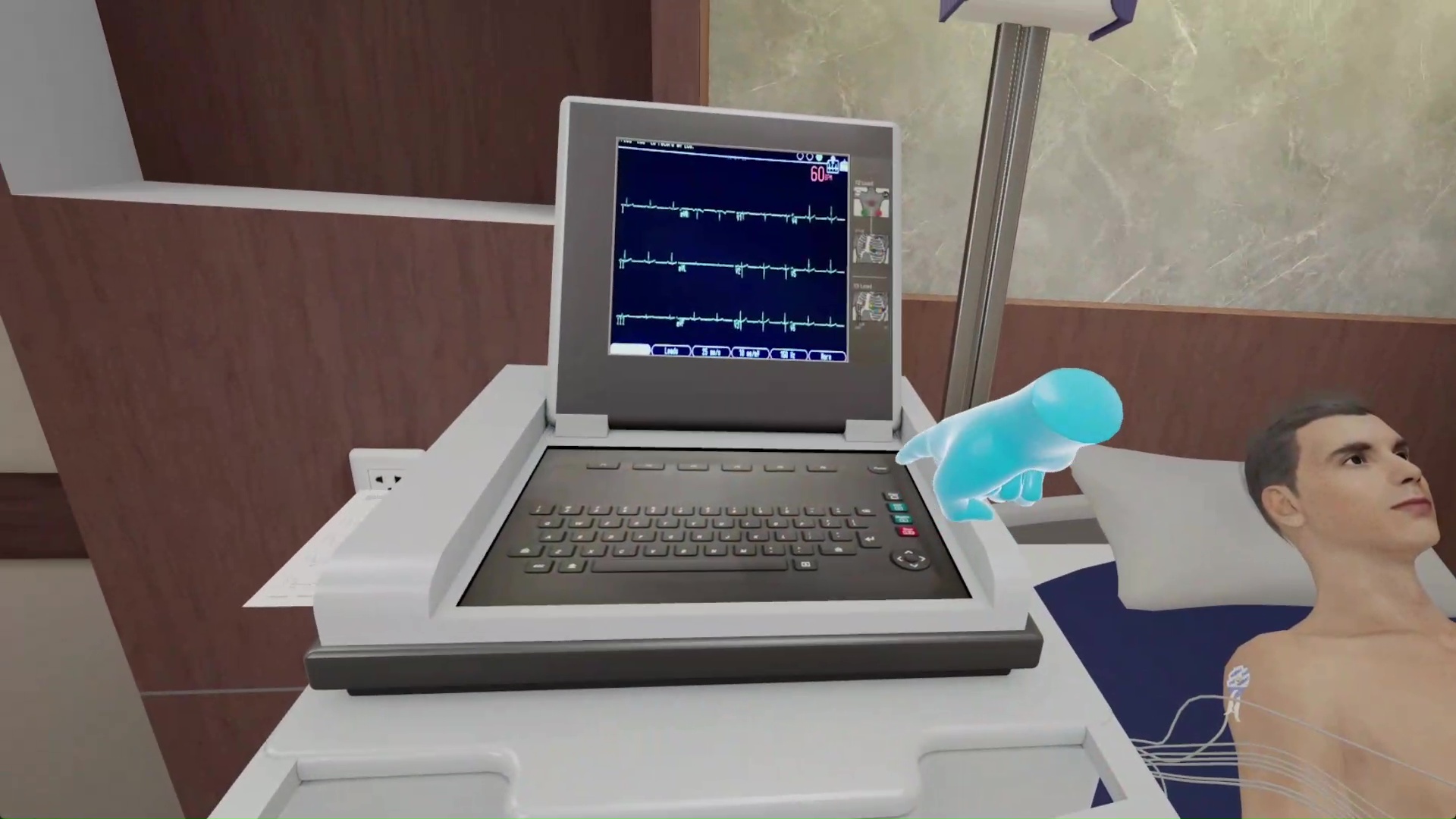
Assessment
Test acquired skills to perform the procedures from start to finish without prompts. An incorrect step will take the learner back to the start to start afresh.
- Live scoring
- Instant feedback
- Adequate affordances for efficient performance
- Time tracking to monitor activity completion
